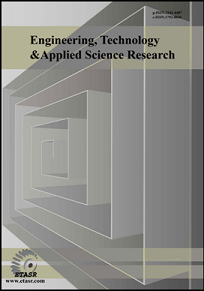Pneumonia and Eye Disease Detection using Convolutional Neural Networks
Abstract
Automatic disease detection systems based on Convolutional Neural Networks (CNNs) are proposed in this paper for helping the medical professionals in the detection of diseases from scan and X-ray images. CNN based classification helps decision making in a prompt manner with high precision. CNNs are a subset of deep learning which is a branch of Artificial Intelligence. The main advantage of CNNs compared to other deep learning algorithms is that they require minimal pre-processing. In the proposed disease detection system, two medical image datasets consisting of Optical Coherence Tomography (OCT) and chest X-ray images of 1-5 year-old children are considered and used as inputs. The medical images are processed and classified using CNN and various performance measuring parameters such as accuracy, loss, and training time are measured. The system is then implemented in hardware, where the testing is done using the trained models. The result shows that the validation accuracy obtained in the case of the eye dataset is around 90% whereas in the case of lung dataset it is around 63%. The proposed system aims to help medical professionals to provide a diagnosis with better accuracy thus helping in reducing infant mortality due to pneumonia and allowing finding the severity of eye disease at an earlier stage.
Keywords:
convolutional neural network, artificial intelligence, X-rays, pneumoniaDownloads
References
D. S. Kermany, M. Goldbaum, W. Kai et al., “Identifying medical diagnoses and treatable diseases by image-based deep learning”, Cell, Vol. 172, No. 5, pp. 1122-1131, 2018
D. P. Kingma, J. Ba, “Adam: A method for stochastic optimization”, International Conference on Learning Representations, San Diego, USA, May 7-9, 2015
K. Simonyan, A. Zisserman, “Very deep convolutional networks for large-scale image recognition”, International Conference on Learning Representations, San Diego, USA, May 7-9, 2015
A. Fuentes, S. Yoon, S. Cheol Kim, D. Sun Park, “A robust deep-learning-based detector for real-time tomato plant diseases and pests recognition”, Sensors, Vol. 17, No. 19, Article ID 2022, 2017 DOI: https://doi.org/10.3390/s17092022
D. Virmani, P. Girdhar, P. Jain, P. Bamdev, “FDREnet: Face detection and recognition pipeline”, Engineering, Technology & Applied Science Research ,Vol. 9, No. 2, pp. 3933-3938, 2019 DOI: https://doi.org/10.48084/etasr.2492
N. C. Eli-Chukwu, “Applications of artificial intelligence in agriculture: A review”, Engineering, Technology & Applied Science Research, Vol. 9, No. 4, pp. 4377-4383, 2019 DOI: https://doi.org/10.48084/etasr.2756
D. Kermany, K. Zhang, M. Goldbaum, “Labeled optical coherence tomography (OCT) and chest X-ray images for classification”, Mendeley Data, Vol. 2, 2018
K. S. Mader, “Eye OCT datasets: Retina OCT datasets with accompanying fundus images from published studies”, available at: https://www.kaggle.com/kmader/eye-oct-datasets
T. Mahmudi, R. Kafieh, H. Rabbani, “Comparison of macular OCTs in right and left eyes of normal people”, in: Proceedings SPIE 9038, Medical Imaging 2014: Biomedical Applications in Molecular, Structural, and Functional Imaging, 90381K, San Diego, California, USA Feb. 15-20, 2014 DOI: https://doi.org/10.1117/12.2044046
M. K. Jahromi, R. Kafieh, H. Rabbani, A. M. Dehnavi, A. Peyman, F. Hajizadeh, Mohammadreza Ommani, “An automatic algorithm for segmentation of the boundaries of corneal layers in optical coherence tomography images using Gaussian mixture model”, Journal of Medical Signals and Sensors, Vol. 4, No. 3, pp. 171-180, 2014 DOI: https://doi.org/10.4103/2228-7477.137763
P. Rajpurkar, J. Irvin, R. L. Ball, et. al, “Deep learning for chest radiograph diagnosis: A retrospective comparison of the CheXNeXt algorithm to practicing radiologists”, PLOS Medicine, Vol. 15, No. 11, Article ID e1002686, 2018 DOI: https://doi.org/10.1371/journal.pmed.1002686
X. Gu, L. Pan, H. Y. Liang, R. Yan, “Classification of bacterial and viral childhood pneumonia using deep learning in chest radiography”, 3rd International Conference on Multimedia and Image Processing, Guiyang, China, March 16-18, 2018 DOI: https://doi.org/10.1145/3195588.3195597
D. Scherer, A. Muller, S. Behnke, “Evaluation of pooling operations in convolutional architectures for object recognition”, 20th International Conference on Artificial Neural Networks, Thessaloniki, Greece, September 15-18, 2010
K. He, X. Zhang, S. Ren, J. Sun, “Delving deep into rectifiers: Surpassing human-level performance on image net classification”, in: Proceedings of the IEEE International Conference on Computer Vision, pp. 1026-1034, IEEE, 2015 DOI: https://doi.org/10.1109/ICCV.2015.123
Y. LeCun, L. Buttou, G. B. Orr, K. R. Muller, ”Efficient backprop”, in: Neural Networks: Tricks of the Trade, 2nd edition, Springer-Verlag, 1998 DOI: https://doi.org/10.1007/3-540-49430-8_2
Y. LeCun, L. Bottou, Y. Bengio, P. Haner, “Gradient-based learning applied to document recognition”, Proceedings of the IEEE, Vol. 86, No. 11, pp. 2278-2324, 1998 DOI: https://doi.org/10.1109/5.726791
Downloads
How to Cite
License
Copyright (c) 2020 Authors

This work is licensed under a Creative Commons Attribution 4.0 International License.
Authors who publish with this journal agree to the following terms:
- Authors retain the copyright and grant the journal the right of first publication with the work simultaneously licensed under a Creative Commons Attribution License that allows others to share the work with an acknowledgement of the work's authorship and initial publication in this journal.
- Authors are able to enter into separate, additional contractual arrangements for the non-exclusive distribution of the journal's published version of the work (e.g., post it to an institutional repository or publish it in a book), with an acknowledgement of its initial publication in this journal.
- Authors are permitted and encouraged to post their work online (e.g., in institutional repositories or on their website) after its publication in ETASR with an acknowledgement of its initial publication in this journal.






